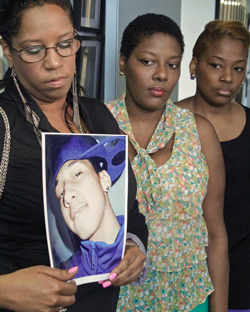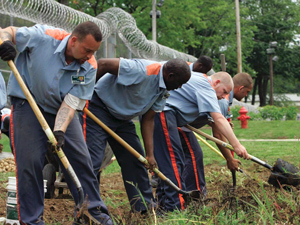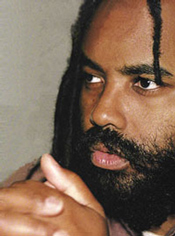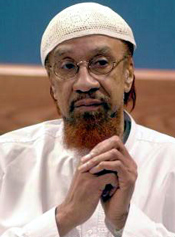NYC: Thousands March to End Stop-and-Frisk
June 17, thousands of people marched through the streets of New York City to demand an end to the NYPD's policy of stop-and-frisk. The crowd was very diverse, old and young, and different nationalities, from many different walks of life—reflecting a growing awareness of this issue and how important it is to take an active stand against stop-and-frisk.There were civil rights groups, labor unions, student groups, teachers, nurses, Occupy Wall Street, immigrant rights organizations, gay and lesbian groups. By Friday, 299 organizations had endorsed the march, including, in addition to African-American organizations, groups representing Japanese, Chinese, Korean, Arab, Jewish and other ethnic and cultural organizations.
Some people talked about what stop-and-frisk actually means to the youth. A young Black man from Brooklyn said, "I'm here because of the issue with the cops, stop-and-frisk of minorities, African-Americans and Latinos, for no reason. They take us and search us for no apparent reason, just because they have a quota by Mayor Bloomberg. So I'm here to fight this issue and stop this."
Whole families came to bear witness. Before the march started, a mother and father held a large color photo of their son, beaten so bad his eyes were swollen shut. They spoke out in anger that radiated through the air, of how the cops had done this to their son, putting him in the hospital for four days. Then their son got up to speak out too, barely able to keep back his tears.
The Evidence Is In, The Verdict Is Clear
In 2011: The NYPD subjected people to stop-and-frisk 686,000 times. Nine out of 10 were not arrested or ticketed; 87 percent were Black or Latino. Black and Latino males 14-24 years old make up 4.7 percent of the city's population, but accounted for 41.6 percent of the stops. Since 2002, the number of stop-and-frisks has increased by 600 percent—4,356,927 people have been stopped during the past 10 years. By law, police must have "reasonable suspicion" that someone is carrying a weapon in order to frisk them—but a gun was retrieved in only 2 percent of the stops. (source: New York Civil Liberties Union)In 2012: The pattern continues. Of the 203,500 people stopped in the first three months, 54 percent were Black, 33 percent were Latino, and 89 percent were found to be innocent. (NYCLU)
The most common reason cops list for stopping people is "furtive movement"—a catch-all term used to basically cover up the fact that the person was stopped for doing nothing.
If you do the math, this means a young African-American or Latino male in New York City will almost certainly get stopped by a cop before he graduates from high school. In this way a database is being created of generations of Black and Latino youths who are being criminalized. Walk down a street in New York City, stop a Black or Latino youth and talk to them. Some of them will tell you they've been stopped 5, 10 or 15 times.
This is a crisis: Hundreds of thousands of innocent people are stopped, interrogated, searched and humiliated by the NYPD for basically living while being Black or Latino. Sitting or standing outside the building where you live—constantly subjected to stop-and-frisk; where will it lead, will you end up in jail? will you end up in the hospital? will you end up dead?
Thousands poured into the streets on Father's Day in New York City to dramatically speak out with one voice that stop-and-frisk MUST END.
Stop-and-frisk is racist. It is illegitimate. It concentrates the kind of racial profiling cops do in big cities and small towns all over this country. And this kind of targeting of Black and Latino people, especially the youth, continues to be a major pipeline feeding mass incarceration. This is how we have gotten to a situation where the United States is the king of the world in locking people up—with its nearly 2.4 million people behind bars and more than 60 percent of them Black or Latino.
A Black boy born in 2001 has a one in three chance of going to prison in his lifetime; a Latino boy has a one in six chance of ending up behind bars. A Black man in the U.S. is five times more likely to be incarcerated than a black man in South Africa at the height of that country's segregation [apartheid] in the 1980s. (Benjamin Jealous, Democracy Now!, June 7, 2012)
A life can be completely ruined in an instant. You're young, you're Black or Latino. One minute you're sitting on your stoop or walking to the store—doing a "furtive movement." You get stopped and frisked. Some bullshit goes down and you find yourself in some crazy courtroom of injustice set up to send you to prison. Once behind bars, the guards can decide the tattoo on your arm means you're in a gang and put you in solitary and subject you to torture. If you ever get out you're marked for life as an ex-con—not able to get a job, kicked out of public housing, ineligible for student loans or grants, not able to vote. Millions of former prisoners are going through this. And if you add the families affected by this, we're talking about many millions more. This amounts to a slow genocide that could easily become a fast one.
At the June 17 march an older Black woman from the Bronx said, "They're killing the young people for no reason at all. And if they continue doing that, where are they going to next? This has to stop."
A young Black woman in the march said, "I believe that stop-and-frisk is all a part of the systematic demise to get young Black people into the system and disenfranchise so they won't be able to vote, they won't be able to make any changes in their future. It's all a part of the system."
Police beatings and murders steal young lives and the cops almost always go free: 23-year-old Amadou Diallo killed in 2003, 23-year-old Sean Bell killed in 2006, 22-year-old Oscar Grant killed in 2009, and 18-year-old Ramarley Graham killed in 2012. And just last week, a cop shot and killed an unarmed 23-year-old woman, Shantel Davis, in Brooklyn after she ran some red lights and crashed into a car. An all-American lynching in Sanford, Florida takes the life of Trayvon Martin. An endless list of lives cut down, taken away from their loved ones who have to get slapped in the face with the "explanation" that this was "proper police procedure" or "justifiable homicide."
Ask yourself: What kind of fucking system is this!!??
As Carl Dix said:
"This system has brutally and bitterly exploited African-American people since Day One. Now it offers no future for many millions of young Black and Latino people except for getting caught up in crime and going in and out of prison or joining the military and becoming a killing machine for this system. Mass incarceration is the system's response to this situation. This alone is reason enough to sweep this system off the face of the earth thru revolution. There is an analysis, a vision and a strategy for such a revolution, concentrated in the works and leadership of Bob Avakian."
Determined Mass Resistance
A "silent march" in 1917 was the inspiration for this year's Father's Day protest against stop-and-frisk. In July 1917, 8,000 Black people marched silently, to the sound of muffled drums, on Fifth Avenue in New York City to protest the increasing violence against Black people, especially against the massacre of at least 40 Black people in East St. Louis, Illinois, earlier in the month. The U.S. had just entered World War 1 and an East St. Louis factory holding government contracts employed Blacks. White people went on a rampage. The NAACP, church and other civic leaders organized the "silent march" to protest the East St. Louis massacre, lynchings, other racist violence around the country, and Jim Crow.Ninety-five years later, we got a new Jim Crow.
In the face of growing protest against stop-and-frisk, NYPD chief Ray Kelly announced that there will be greater supervision of street cops. New York Governor Andrew Cuomo has proposed legislation to reduce the penalty for possessing a small amount of marijuana from a misdemeanor to a violation—which would mean the many thousands now sent to jail for marijuana after being stopped and frisked would only get a ticket and fine. But these are just tweaks to a totally illegitimate policy; they aren't about getting rid of stop-and-frisk. Bloomberg said it himself, the stop-and-frisk program needs to be "mended, not ended."
Stop-and-frisk can't be mended, bended, tweaked or reformed. It must be ended,period. We need to continue to build determined massive resistance to stop-and-frisk, mass incarceration and all their consequences. And this struggle against stop-and-frisk can be a powerful part of the larger fight against mass incarceration.
*****
A Black woman artist talked about what she thought of the day: "It was great. It was a great opportunity to walk down Central Park with all these different organizations of people in silent protest against what's happening, and thinking about what the cops were thinking… These gatekeepers are still standing there keeping the gate… I feel like what I was marching for was the future. Because once we leave, we're going to hand the baton to our children. And do you want your children to be a gatekeeper for the corporations and the system? Or do you want your child to be part of the change?... Part of community and revolution versus part of the system that goes against that."| Photos: Li Onesto/Revolution |



